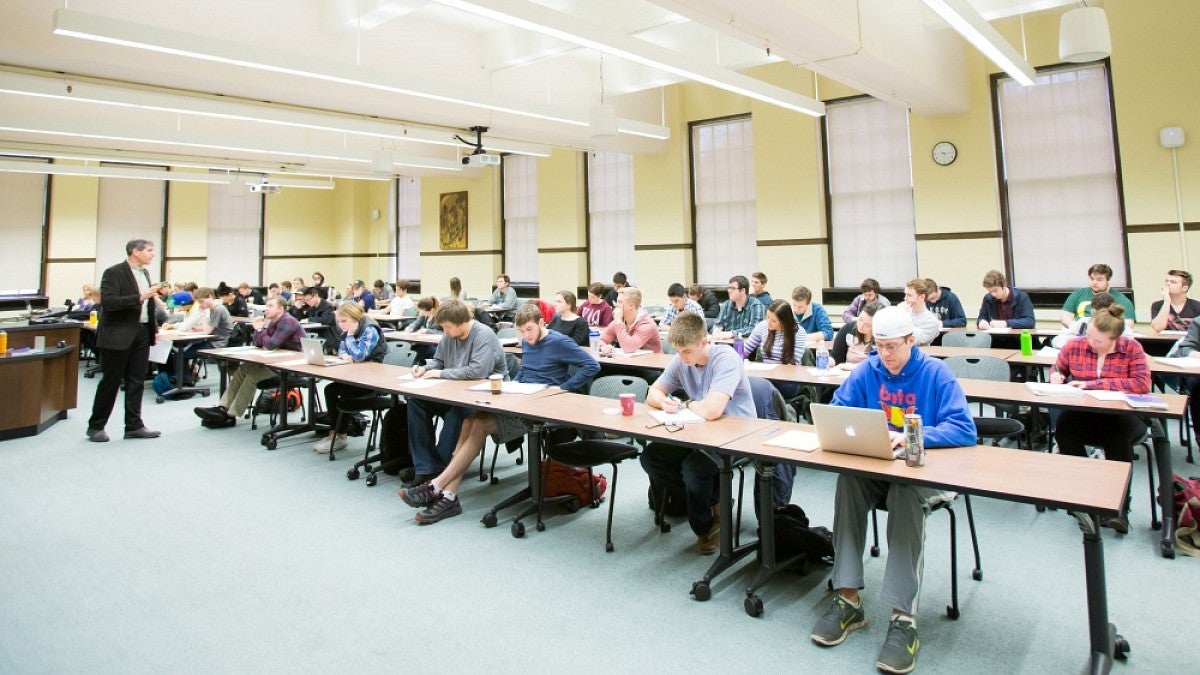The role and process of teaching evaluations at UO is changing.
Almost two years since the University Senate and the Office of the Provost began looking at teaching evaluations, a new format is about to be launched. The UO Senate, Associate Vice Provost for Academic Affairs Sierra Dawson and the Assistant Vice Provost for the Teaching Engagement Program Lee Rumbarger have been working together on the new policies.
“Instead of using numerical scores from student course evaluations as measures of teaching quality, the new system will use surveys that provide instructors with more useful written feedback to specific questions about teaching practices,” said Bill Harbaugh, UO Senate president and professor of economics.
This evaluations initiative was inspired by two UO students, Emily Wu and Kenneth Ancell, when they approached Harbaugh about student course evaluations and grade inflation. A recent article in The Chronicle of Higher Education explains what they found and how it led to efforts by the Senate and provost’s office to develop a new student experience survey.
In January 2019, the University Senate approved legislation warning against the use of raw numerical scores from student evaluations as measures of teaching quality in tenure and merit decisions. Research has shown that those scores may be biased against women, racial and ethnic minorities, and other groups, while being unrelated to the quality and effectiveness of the instructor.
In fall 2019, the University Senate will replace the end-of-term student numerical course evaluations for all courses with the new student experience surveys. For winter 2019, 173 courses are piloting the midterm and end-of-term student surveys. Samples of these surveys can be found on the Office of the Provost website.
Last fall, a small group of faculty members meeting under the Communities Accelerating the Impact of Teaching program and focused on teaching excellence and evaluation piloted new instructor reflection and student experience surveys in the Department of English, Clark Honors College, Lundquist College of Business and School of Planning, Public Policy and Management. Fifty-six faculty members completed the instructor reflection and 1,979 students completed the new end-of-term student survey, with 878 students also completing a new midterm student survey.
The next steps in the effort will be to improve the methods used in peer evaluations — where faculty members review courses taught by other faculty members — and provide frameworks for departments to develop definitions of teaching excellence.
The new surveys will provide faculty members with detailed and useful feedback about the student experience in the classroom.
“Our overarching goal is to ensure that teaching evaluations are fair and transparent, occur against a clear definition of teaching excellence and criteria, and incorporate data collected from peers, students and the faculty themselves,” Dawson said. “It has been so exciting to do this work with faculty, unit heads and Senate leaders all working towards the same important goal.”
Those efforts parallel other reforms happening at universities across the country and across the globe to evaluate the quality of teaching.
In fall 2018, Ginger Clark, assistant vice provost for academic and faculty affairs at the University of Southern California, visited the UO to discuss USC’s reform of its teaching evaluations. A full recording of the discussion is available via Vimeo.
During the 2019-20 academic year, the University Senate and Office of the Provost will continue the work by defining teaching excellence and revising peer evaluation surveys.
For a full timeline of events and changes to UO teaching evaluations or to learn more, visit the Office of the Provost website.
—Jesse Summers, University Communications


